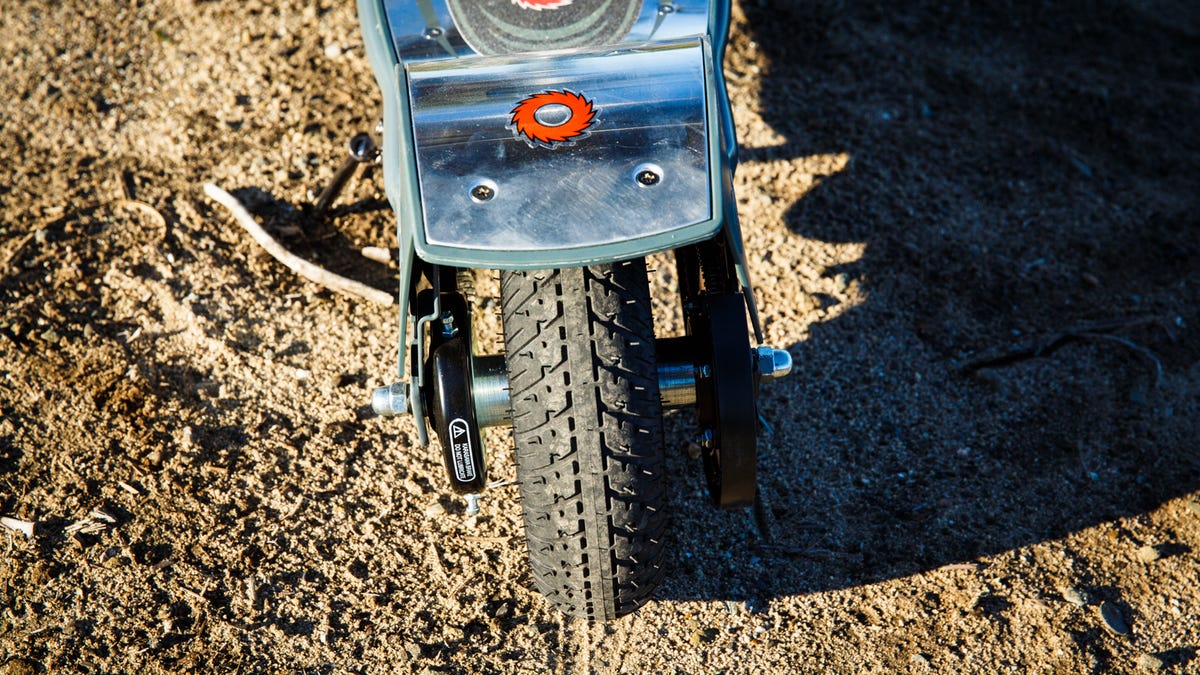Razor E300 electric scooter review: Razor E300 electric scooter lacks the features to reach its potential
Razor’s lightweight scooters burst onto the scene about 15 years ago, and you can still see people riding them down city sidewalks. But as those early riders have grown older, possibly they have gotten lazier, as Razor now offers a complete line of electric scooters.
Mục Lục
The Good
Fat pneumatic tires give the Razor E300 a comfortable, stable ride, and its low price makes it a decent value proposition.
The Bad
The E300 is extremely basic, even lacking a battery charge indicator. The accelerator is difficult to modulate, and its chain drivetrain is very noisy.
The Bottom Line
By leaving off features such as a lock, lights or charge indicator, Razor misses an opportunity to make the E300 electric scooter a cheap transportation alternative, instead relegating it to leisure status.
The Razor E300 is the largest one in the lineup, capable of speeds up to 15 mph and able to support riders weighing up to 220 pounds. Because e-mobility has become a topic in transportation discourse, I decided to give the E300 a try.
The E300 that Razor sent me assembled easily, merely requiring a few minutes with a hex wrench to get the steering column attached. Tubular steel forms the frame and cables for accelerator and brake extend loosely from deck to handlebars. The deck itself is nice and wide, and includes some nonskid material on the surface. Razor hides two lead acid batteries in this thick deck, contributing to the 46-pound overall weight. Two pneumatic tires support the deck.
The look is pretty basic with little hints of style. For example, I like the brushed steel shell over the rear wheel, providing a convenient place to rest my foot. The power switch is down on the side of the deck, next to the charging port.
No lights, no lock
As for features, the E300 can claim very few. Other than its drive controls, brake and accelerator, there really are none. An electric motor mounted at the rear of the deck drives the rear wheel with a chain and simple reduction gear. Twist the right-handlebar accelerator and the E300 takes off. Pull the left-handlebar brake lever and it stops.
In this regard, the E300 fell down as a modern transportation alternative. Without any sort of charge indicator, I had no idea how much electricity I had left. Razor’s specs merely note that the E300 can run for about 40 minutes on a charge. Integrated lighting, such as LEDs in the front and rear, would have made the E300 safe to ride at night. As for parking, the E300 has a convenient kickstand, but there is no way to lock it up. The structure of the scooter lacks any sort of link or hole through which I could run a bicycle lock, which I guess would be a good excuse to ride it through the grocery store when running errands.
Plugging it in, I noticed that burning rubber aroma peculiar to charging lead acid batteries. My co-workers noticed it too, and suggested I keep this beefy little scooter in the garage. The E300’s wall adapter featured a little green light, which served as my only indication of a full charge.
Fast enough
Taking to San Francisco’s streets, I twisted the E300’s accelerator and was off. The torque from the motor was strong and immediate, but I had little control over acceleration. The accelerator didn’t offer much in the way of modulation, generally assuming an on or off state. When I wanted to ride at less than the maximum speed, I had to alternate between coasting and popping the accelerator. With that technique, the motor’s torque made the ride jerky.

Plump tires make for a comfortable ride, but the E300’s lead acid battery drivetrain is a bit primitive.
Razor’s specs note that the E300 goes a maximum of 15 mph, but lacking a speedometer, I had no way to gauge my speed. It seemed fast enough that I would highly recommend wearing a helmet. That helmet would also mitigate the E300’s excessive noise. The motor and chain drive make a constant racket under acceleration.
The wide deck and plump tires made for a very comfortable ride. I took the E300 down rough asphalt and over the kinds of small potholes that dot typical city streets. Although there is no actual spring suspension built into this scooter, the tires nicely absorbed all the vibration.
Taking it up a moderate incline, the motor pulled reasonably well without bogging down. As for the range, it seemed likely it could go for a bit more than the advertised 40 minutes. I rode the E300 for almost an hour, often at full throttle, and it did not run out of power.
Value play
The Razor E300’s big tires make it a comfortable ride for city distances, and its batteries seem to offer a good amount of range. But this electric scooter misses the boat on all kinds of features that could take it from occasional toy to real transportation. The inability to lock it up limits its use for quick errands and the lack of a charge gauge has too much potential to leave you stranded, having to push this scooter the old-fashioned way.
The lead acid battery drivetrain is hopelessly primitive, and presents some serious problems. This type of battery has limited recharge cycles, so don’t expect the E300 to last more than five years. Likewise, store it for an extended period of time and the batteries will die.
The Razor E300’s saving grace is its price. Coming in at only $270 I wouldn’t expect much in the way of frills, and if it gave me a few years of easy transportation it makes a good value proposition.















![Toni Kroos là ai? [ sự thật về tiểu sử đầy đủ Toni Kroos ]](https://evbn.org/wp-content/uploads/New-Project-6635-1671934592.jpg)


